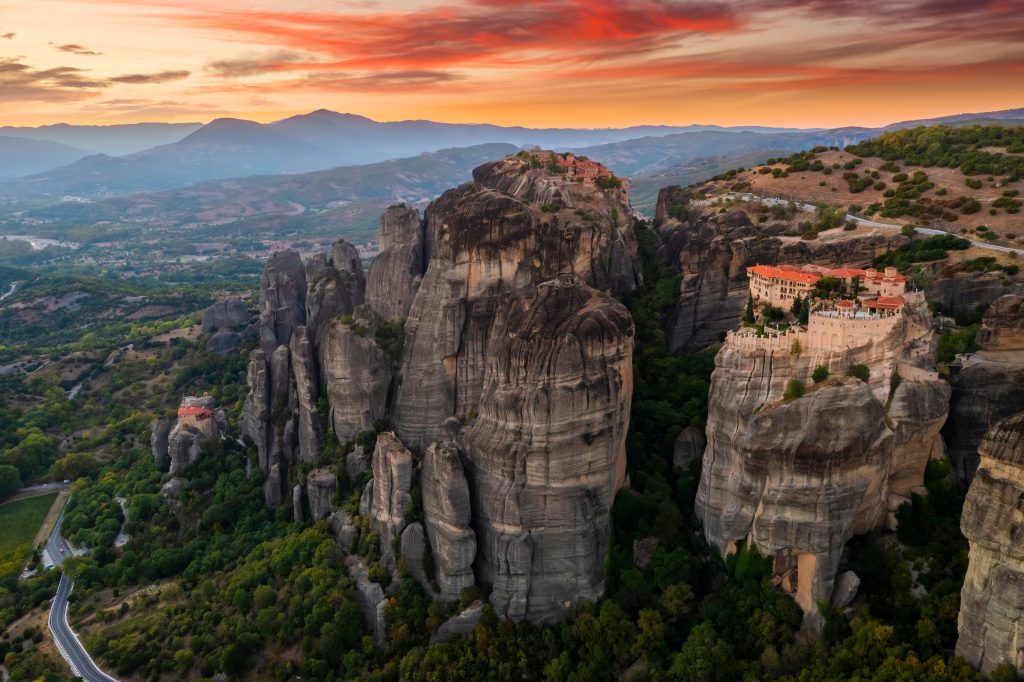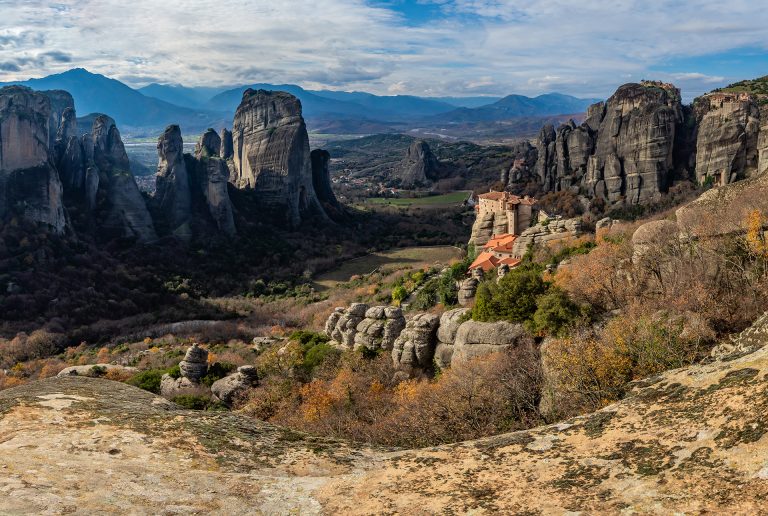
How and When the Rocks formed
About 50 million years ago, the whole region of modern Meteora Greece was on the bottom of a large ancient ocean called Téthys. Thirty million years ago, Meteora was the shore of this ancient ocean with long sandy beaches spanning tens of kilometres. In this long coastline, a fluvial delta developed, accumulating large amounts of sediments such as gobbles, mud, sand, and dissolved limestone from the surrounding mountains. As the earth kept rising Meteora region rises above sea level. The process of erosion gradually exposed the cemented deposits that were buried in the basin of the seabed of this old sea.
The Monasteries
At their height in the sixteenth century, there were 24 monasteries in Meteora, Greece. Today, six of them are open to the exploration and admiration of everyone. They were created for the service of monks and nuns according to the teachings of the Eastern Orthodox Church. Perched on high cliffs, they are now accessible by stairs and walkways carved into the rock formations.
Meteora Highlights

Stunning Sunset
Capture the tranquility of Meteora’s sunset, the ultimate Meteora experience!
Hiking Tour
Explore the unspoilt beauty of Meteora and discover its majestic view!
Monastery Sightseeing
Discover the rich history and natural beauty of Meteora and discover the cultural heritage of this site classified as a UNESCO World Heritage Site.










